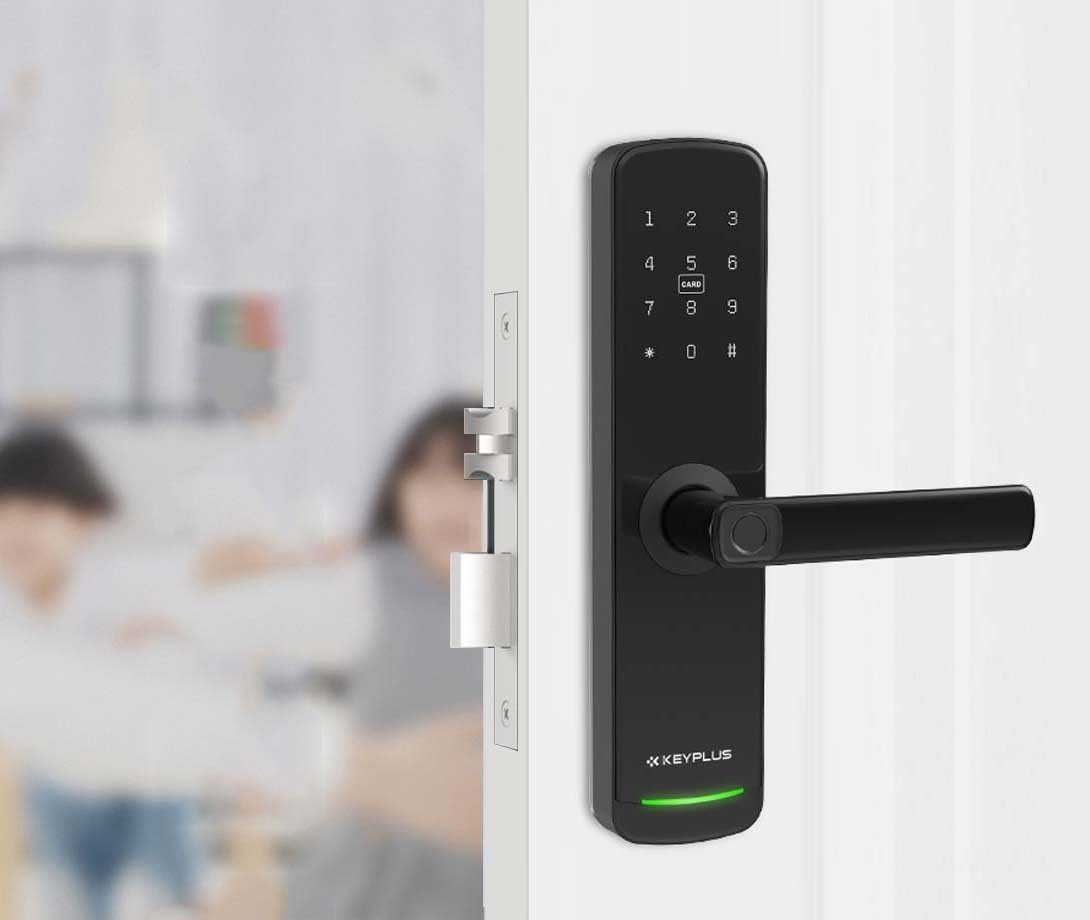How Do Electronic Door Locks Work?
Electronic door locks have transformed home security, offering keyless convenience and smart features. But how exactly do these modern locks function? Whether you’re considering upgrading your front door or just curious about the technology, this guide will explain everything in simple terms.
How Electronic Door Locks Work: The Basics
Electronic door locks replace traditional keys with digital authentication methods. Instead of inserting a metal key, you can unlock your door using:
- PIN codes (typed on a keypad)
- Smartphone apps (via Bluetooth or Wi-Fi)
- Fingerprint scanners (biometric access)
- RFID cards/fobs (tap-to-unlock)
- Voice commands (via Alexa, Google Assistant, or Siri)
Inside the lock, a small motorized deadbolt or latch mechanism responds to these inputs, either granting or denying access.
Key Components of an Electronic Door Lock
1. The Lock Mechanism
- Motorized Deadbolt: Replaces the manual turn mechanism in traditional locks.
- Latch Retractor: Some models automatically pull the door closed when locked.
- Auto-Lock Feature: Many smart locks can engage automatically after a set time.
2. The Authentication System
- Keypad: For PIN entry (common in basic models).
- Bluetooth/Wi-Fi Module: Allows smartphone control.
- Fingerprint Sensor: Scans and verifies biometric data.
- RFID/NFC Reader: Works with keycards or smartphones.
3. The Power Source
Most electronic locks use:
- Replaceable batteries (AA, AAA, or lithium)
- Hardwired connections (less common in homes)
- Emergency power options (9V battery terminals or USB-C ports)
4. The Control Hub (For Smart Locks)
- Connects to your home Wi-Fi or a smart home system.
- Enables remote access and automation.
Types of Electronic Door Locks & How They Work
1. Keypad Locks (Code-Based Entry)
How they work:
- You enter a pre-set PIN on the keypad.
- The lock verifies the code and releases the deadbolt.
- No smartphone or internet required.
Best for:
- Renters or those who want simple keyless entry.
2. Bluetooth Smart Locks (Phone-Controlled)
How they work:
- The lock pairs with your phone via Bluetooth.
- You unlock it by tapping an app or using geofencing (auto-unlock when near).
- Some models allow temporary guest access.
Best for:
- Homeowners who want smartphone convenience without Wi-Fi dependency.
3. Wi-Fi Smart Locks (Remote Access)
How they work:
- Connects to home Wi-Fi for cloud-based control.
- Lets you lock/unlock from anywhere via an app.
- Often integrates with Alexa, Google Home, or Apple HomeKit.
Best for:
- Smart home enthusiasts who want remote access.
4. Fingerprint Locks (Biometric Entry)
How they work:
- Scans and stores fingerprint data.
- Compares scans to approved users before unlocking.
- Some models allow multiple fingerprints (family/guest access).
Best for:
- High-security needs (no codes to share or lose).
5. RFID/NFC Locks (Tap-to-Unlock)
How they work:
- Uses radio frequency (like hotel keycards).
- Tap an RFID card, fob, or smartphone to unlock.
Best for:
- Rentals or businesses needing temporary access control.
Security Features of Electronic Locks
1. Encryption & Cybersecurity
- Most smart locks use AES-128 or AES-256 encryption to prevent hacking.
- Wi-Fi locks should have two-factor authentication (2FA) for extra security.
2. Tamper Alerts & Activity Logs
- Many locks notify you of:
- Failed entry attempts
- Unauthorized access
- Low battery warnings
3. Physical Security
- Anti-pick deadbolts (like those in Schlage & Yale locks).
- Reinforced strike plates to resist forced entry.
Pros & Cons of Electronic Door Locks
Advantages
- No more lost keys (use codes or phones instead).
- Remote access (let in guests while away).
- Temporary access (set expiring codes for cleaners or Airbnb guests).
- Auto-locking (never forget to lock your door).
Disadvantages
- Battery dependency (can fail if not maintained).
- Hacking risks (Wi-Fi locks need proper security setup).
- Higher cost than traditional locks.
Are Electronic Locks Right for You?
Best For:
Tech-savvy homeowners
Rental property managers
Families who need flexible access
Not Ideal For:
Those who prefer simple, no-tech solutions
Extreme weather areas (unless weatherproofed)
Budget-conscious buyers (good models start at $150+)
Final Thoughts
Electronic door locks offer convenience and modern security, but they require some tech comfort. If you want keyless entry without Wi-Fi, a basic keypad lock works great. For full smart home control, a Wi-Fi-enabled model is best.
Pro Tip: Always choose a lock with a physical key backup in case of power failure.
Post time: Apr-25-2025


